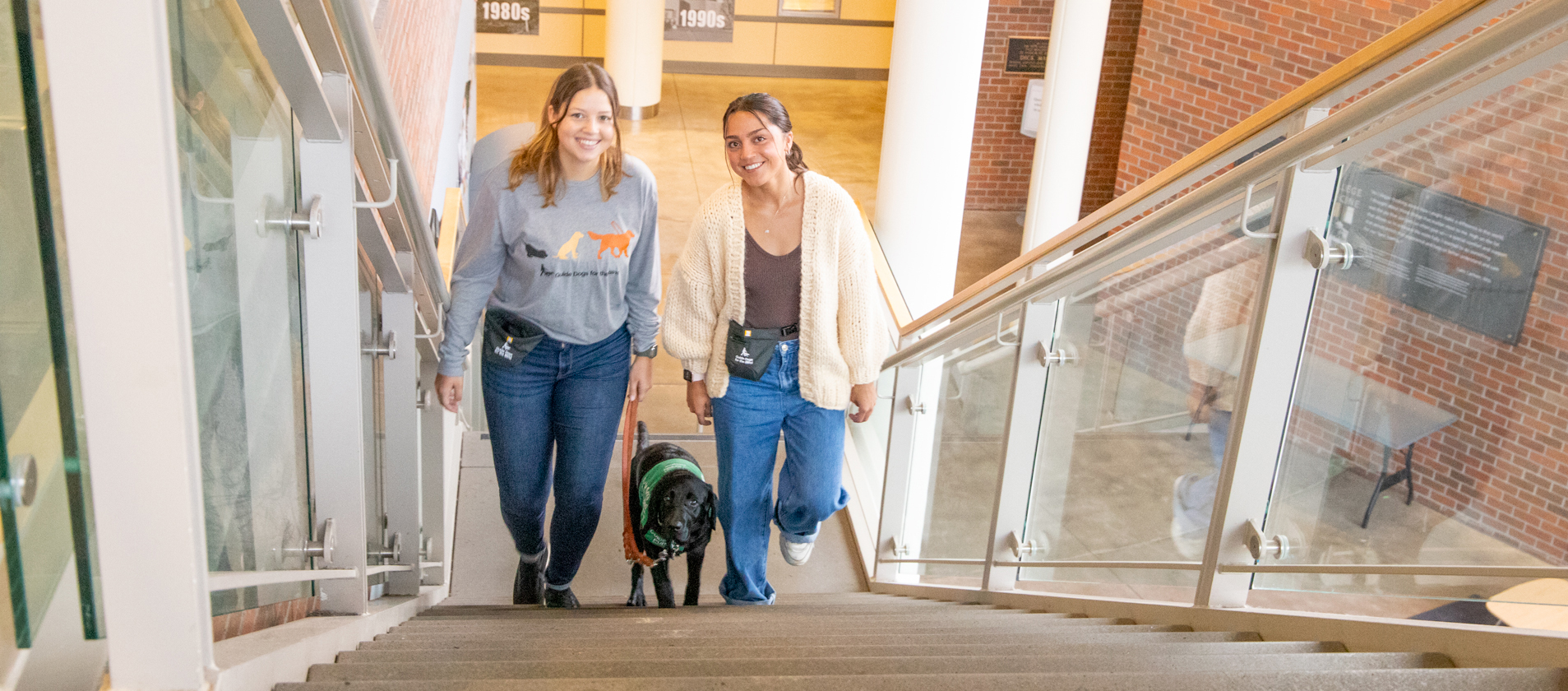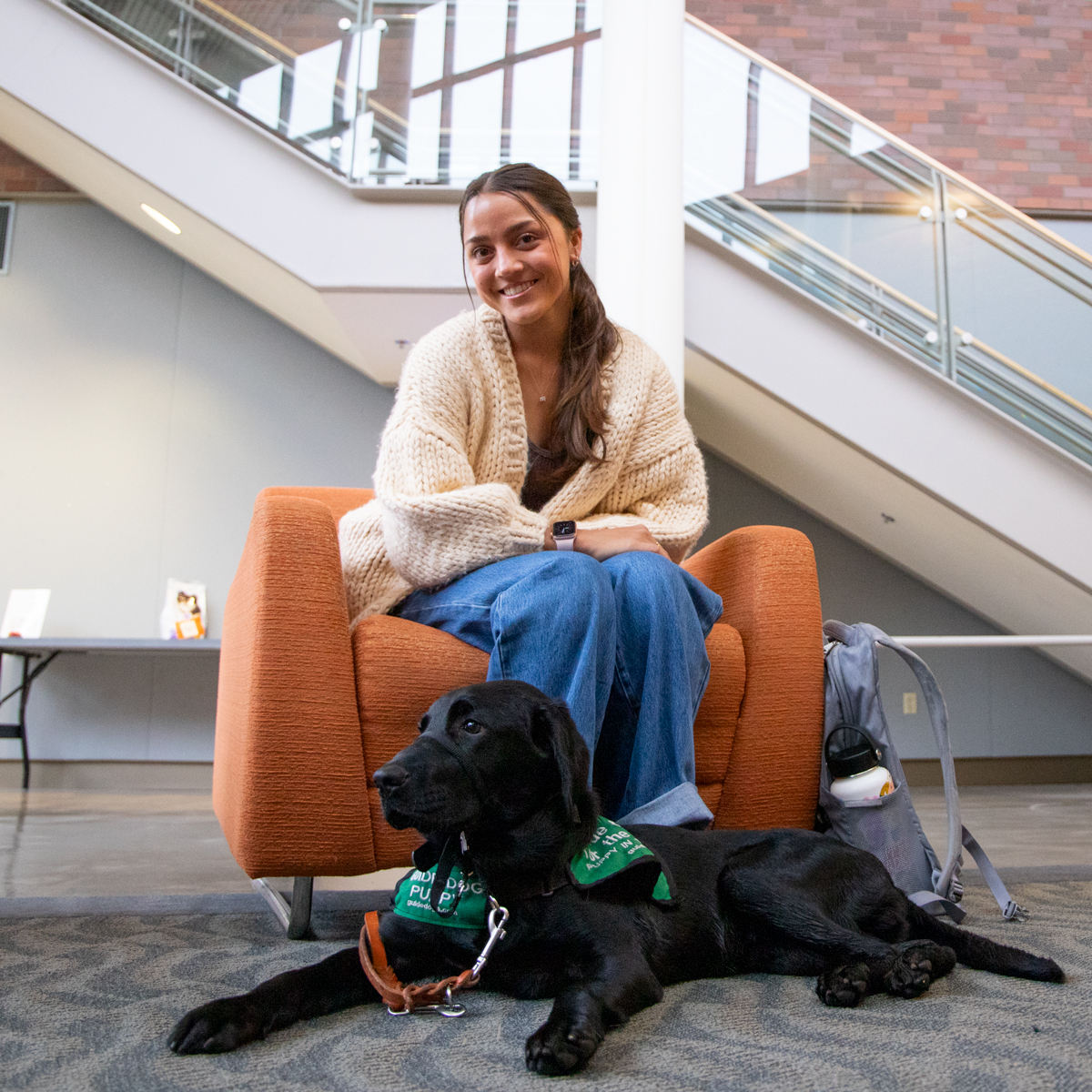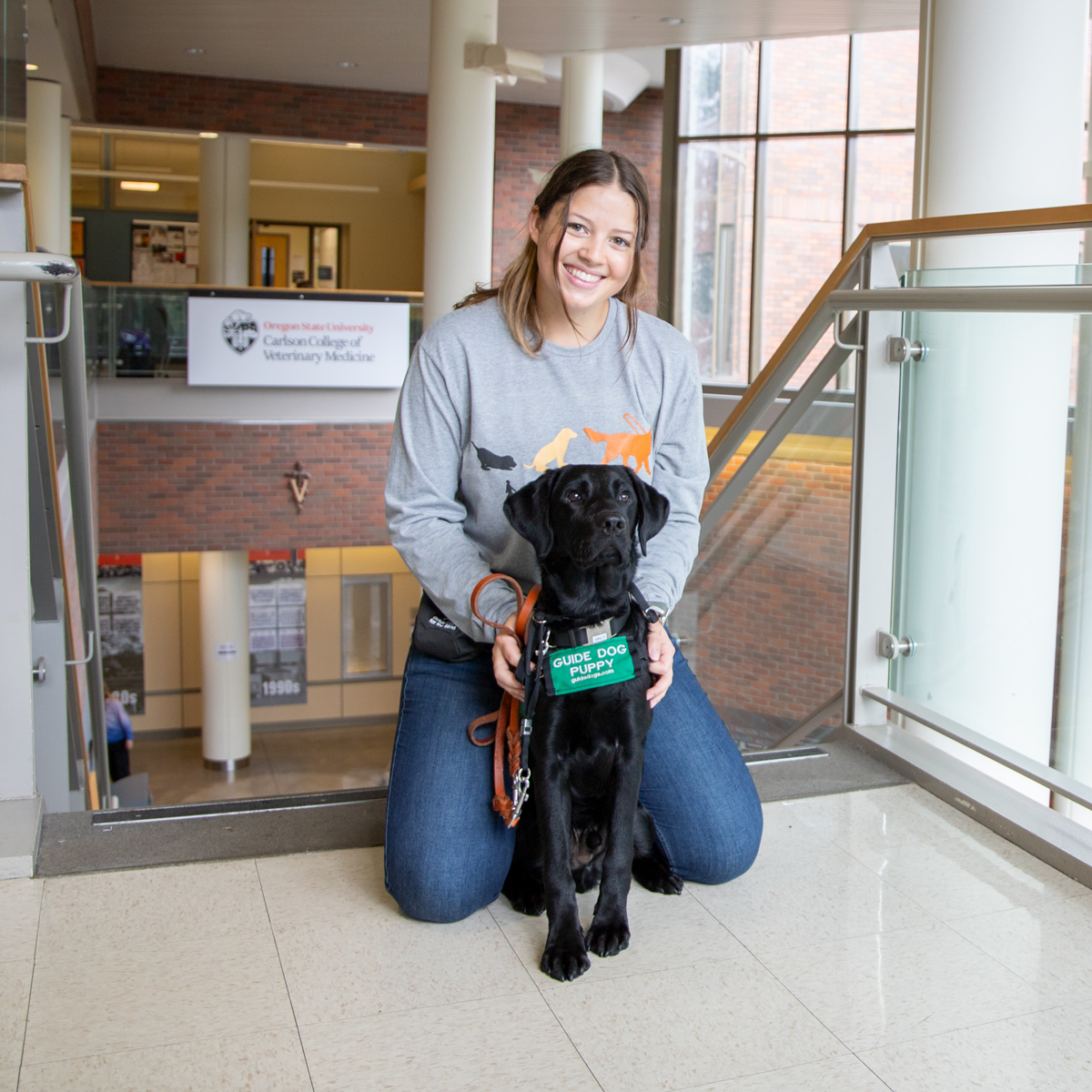Why did you want to raise a puppy for Guide Dogs for the Blind?
Starchvick:
Puppies! Hard to resist those sweet puppy pictures they post on Instagram! In all seriousness, it combines a lot of the things I am really passionate about: dogs, dog behavior and training. My dad is an optometrist, and I am interested in becoming a veterinary ophthalmologist, so eyes and dogs have always been a big part of my life! Having the capability and opportunity to help raise a puppy who will continue on to change lives is amazing.
Nemivant:
I always love to volunteer for my community, and I found an organization that I am passionate about here in Corvallis! I also have previous experience in training service dogs, and I really wanted to begin to puppy raise again. It is amazing to be given the opportunity to make a difference in people’s lives, empowering their independence and confidence!
Why is raising service dogs important to you personally?
Nemivant:
This may sound like such a cliché answer, but the start of my service dog training journey at just 14 years old inspired me to pursue a career as a veterinarian. This experience was full of celebrations of our victories, tears after finding my service dog a new home and a passion for helping others. A domino effect followed, and I volunteered at their puppy and breeding facilities, and I shadowed the veterinarians. Most experiences after that involved animals in one way or another. I grew so much from my first service dog in training to now, and I am so grateful that I am able to raise once again! Everything has come full circle in the best way!
Emmie Starchvick, Newton and Erin Nemivant between classes in Magruder Hall.
How is Guide Dogs for the Blind structured?
Starchvick:
Guide Dogs for the Blind is based in San Rafael, California with a second campus in Boring, Oregon. We have smaller clubs that are scattered throughout the western and southwestern states that consist of a leader and the puppy raisers and sitters in the area. In the puppy clubs, the puppy raisers help each other with training, take their puppies on outings and socialize together along with their puppies. We might practice taking puppies on public transportation, going to the movies or other public places to get the puppies comfortable in many different environments.
What is the process for raising a Guide Dogs for the Blind puppy?
Starchvick:
The training really starts from day three after the puppies are born. The staff and volunteers in the breeding facility prepare them by exposing them to new surfaces, noises, smells, they practice body handling, and even begin kennel training, grooming and getting used to wearing their puppy jacket, all before they get sent to their puppy raisers. Puppy raisers will receive the puppy at around eight weeks old and have them for approximately a year. Over the year, our job is to teach the puppy good manners and provide socialization experiences. After all this, when the puppy is around 15-17 months old, they head back to one of the GDB campuses for their formal training (puppy raisers sometimes refer to it as “college”) where they learn everything about guide work! GDB does an amazing job with placing dogs in a career that they want to be in. Not every dog wants to be a guide and that’s OK! They might excel at other service work or the K9 Buddies program, or they might want to be a beloved pet. We call it a “career change” when this happens. GDB also conducts thorough medical testing on all dogs, and some get career changed due to medical reasons.
How does raising Newton play into the bigger Guide Dogs for the Blind picture?
Starchvick:
Currently we have three dogs total in our Corvallis club, Nexa (his sister) and Fiori are the other two, all three are black labs. We are in the process of hopefully creating an extension club in the vet school for extra support. In all of Guide Dogs for the Blind, they currently have over 700 puppies being raised by volunteer puppy raisers like us.
Nemivant:
At our club meetings, they get lots of practice with different handlers that aren’t currently raising and do not have a puppy. We did just have a few of our dogs go to their final training, and one of them is currently a working guide. His name is Boone, and our club is so proud of him!
What’s a day in the life of you and Newton look like?
Nemivant:
The first thing in our day is usually a walk! Not only does it get out his puppy energy, but it’s great practice with distractions, traffic and novel noises. During this, I’ll think of what practice I will do for the day. Usually, I’ll do a few days of sessions to learn specific behaviors. For example, when I work with him to stay, I’ll work on that for four to five days in a row to really solidify the concept. And of course, I’ll ensure that he can recall that behavior days and weeks later. Currently, I am a tutor, so when I’m working, Newton is usually sleeping or playing! Even though he may look poised in public, he is still such a puppy when the cape is off! For Newton, it’s sleep, play, eat AND train. Lastly, I’ll plan a few outings a week with Newton, where we do things like run errands, go to restaurants, sit in a coffee shop and the list goes on. It’s always a fun-filled day with Newton in it!
What’s the response to Newton been around the college?
Starchvick:
Newton is my first puppy I have raised so I wasn’t sure what to expect. The response to him has been amazing though! People have been very respectful. They know not to touch or distract him, and they love learning about the puppy raising process. I always leave a little extra time when going on outings with him because people love to ask about him and hear about the process, it is a great opportunity to share with them GDB’s mission.
Nemivant:
The support I have received from friends, classmates, the college and even my family has been unwavering. It makes me so happy that everyone is rooting for Newton’s success! Everyone that I have talked to has been so kind and willing to learn more about guide dogs in training.



